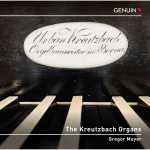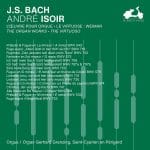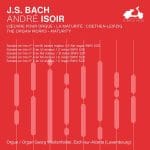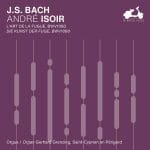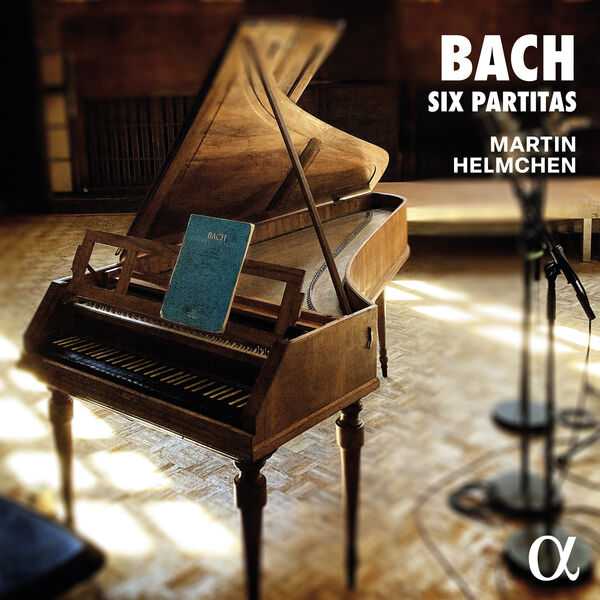

Composer: Johann Sebastian Bach
Performer: Martin Helmchen
Number of Discs: 2
Format: FLAC (tracks)
Label: Alpha
Catalogue: ALPHA994
Release: 2024
Size: 1.58 GB
Recovery: +3%
Scan: yes
CD 01
Partita No. 1 in B-Flat Major, BWV 825
01. I. Prelude
02. II. Allemande
03. III. Courante
04. IV. Sarabande
05. V. Menuett I & II
06. VI. Gigue
Partita No. 3 in A Minor, BWV 827
07. I. Fantasia
08. II. Allemande
09. III. Courante
10. IV. Sarabande
11. V. Burlesca
12. VI. Scherzo
13. VII. Gigue
Partita No. 4 in D Major, BWV 828
14. I. Ouverture
15. II. Allemande
16. III. Courante
17. IV. Aria
18. V. Sarabande
19. VI. Menuett
20. VII. Gigue
CD 02
Partita No. 2 in C Minor, BWV 826
01. I. Sinfonia
02. II. Allemande
03. III. Courante
04. IV. Sarabande
05. V. Rondeau
06. VI. Capriccio
Partita No. 5 in G Major, BWV 829
07. I. Preambulum
08. II. Allemande
09. III. Corrente
10. IV. Sarabande
11. V. Tempo di Minuetto
12. VI. Passepied
13. VII. Gigue
Partita No. 6 in E Minor, BWV 830
14. I. Toccata
15. II. Allemande
16. III. Corrente
17. IV. Air
18. V. Sarabande
19. VI. Tempo di Gavotta
20. VII. Gigue
Martin Helmchen belongs to the category of great piano virtuosos who are also interested in early instruments: ‘One of the most thrilling moments of my life as a pianist was when I encountered the intact, original Spat & Schmahl tangent piano from 1790. My initial doubts about a pianist of today being able to master such an instrument rapidly gave way to the swelling conviction that here one could make certain things in Bach’s music sound in a way that is impossible on both the harpsichord and the modern piano. Everything here subjugated me: the colours, the symbiosis of the characteristics of the harpsichord, clavichord and early piano, the buff stop, the opening up of polyphonic textures.’ It is true that this instrument was built forty years after Bach’s death, but, Helmchen continues, ‘the greatest composers, including Beethoven, complained about the limitations of their instrument, and it’s fascinating to play keyboard instruments that were ultimately an extension and improvement of the ones those composers knew’.
There are many reasons a musician would choose to perform and record Bach’s Partitas for keyboard; one is that it’s something of a rite of passage for keyboardists attempting to reach wider audiences, but as Martin Helmchen notes here, musicians “need to find one’s own voice” while also staying true to the sound of the music as Bach intended. The draw to this album for many will surely be the instrument Helmchen chose to express his voice, an original Späth und Schmahl tangent piano (“tangentenflügel”) from 1790 on loan for this recording from Georg Ott, who restored the instrument after its 2006 discovery in the estate attic of Classical-period publisher Johann Esaias von Seidel. It is an interesting-sounding instrument, sharing qualities of a harpsichord, clavichord, and fortepiano. It has stops and dampers, which Helmchen makes full use of, offering a range of expressivity that one would not get from a harpsichord while not entirely losing the sound one would expect from the era in which the works were written. Consider the Sarabande of the Partita No. 3, BWV 827; the strings sound as if plucked by a finger (or a harpsichord jack) without the same resonance one would get from a harpsichord, and wholly different than a sound a modern piano would make. Helmchen is a consistently precise player, and the tangent piano’s action responds well, so Bach’s counterpoint rings clear in these performances. His tempos are generally more deliberate than many other recordings on the market, which might not be to everyone’s taste, but the album is recommended for the opportunity to hear this fascinating instrument.
